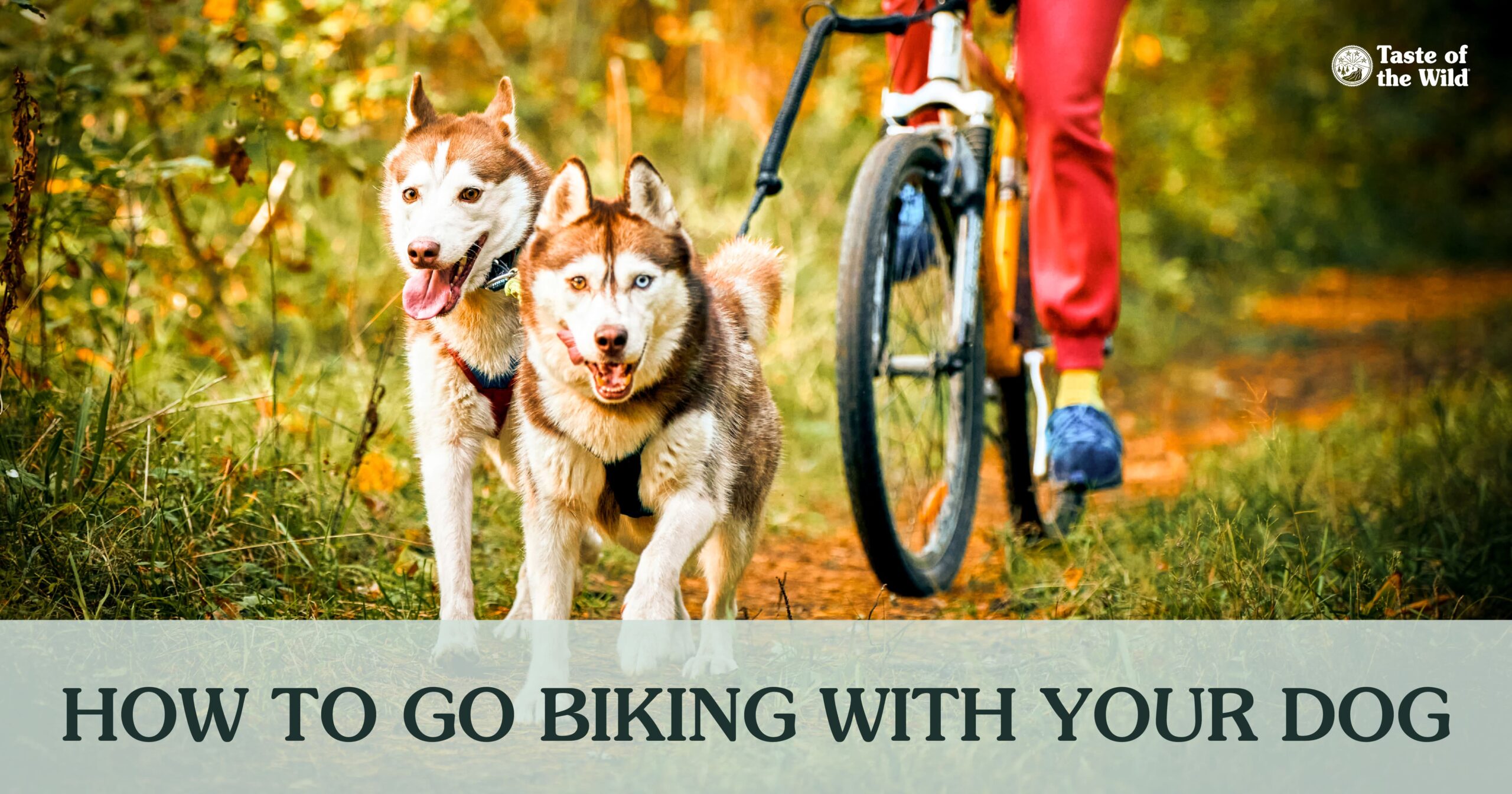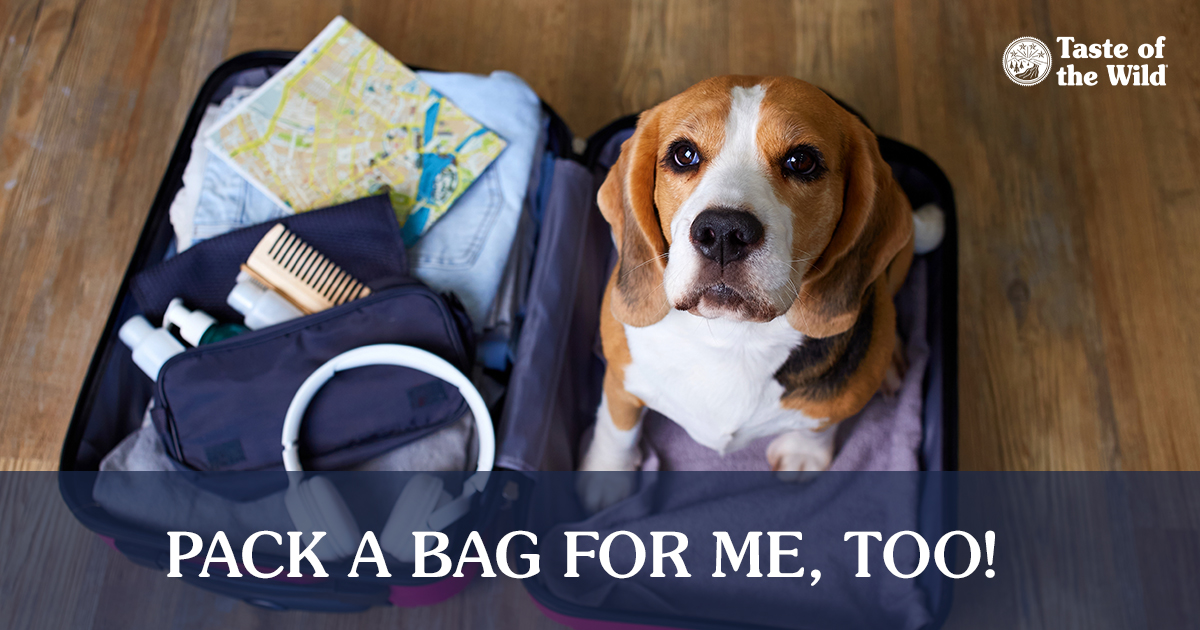How to Go Biking with Your Dog
Thursday, April 13, 2023 | Lifestyle

Warmer weather means it’s time to dust off the bike and get out the dog harness. But wait! Did you know not all dogs are equipped for running alongside a bike? Unfortunately, it’s true. There’s more to biking with dogs than just harnessing them up and pedaling away. Some dogs simply aren’t up for it (and we mean that literally). Long legs can really make a difference when biking with your dog. Small dogs and some medium-sized dogs cannot keep up with a bike due to their stature.
Before biking with your dog, talk with your veterinarian to make sure your doggo is in the right physical condition and right height to begin their biking journey.
Getting started biking with your dog
Make sure your dog is leash trained before taking them out on any biking adventures. Once your dog is leash trained and has the green light from their veterinarian, it’s time to get the right equipment. Your shopping list should include a bicycle leash, a harness, a collapsible bowl, water bottles and a pack for your biking adventures.
Do not use a regular leash when biking with your dog. A bicycle leash attaches to the bike to help keep Fido away from the moving wheels. A biking harness is required for biking rather than a collar. This helps prevent your dog from being yanked or choked in case one of you stops suddenly.
Check the pavement and terrain before biking with a dog
Biking on grass or dirt trails are best for Fido’s paws. However, we recognize that’s not always possible. So before hitting the pavement, check the concrete’s temperature. Place your hand comfortably on the pavement for 10 seconds. If it’s too hot for you, it’s too hot for your dog’s paw. That’s a great tip to remember as the temperatures heat up this spring and summer!
Running on concrete or asphalt over time can be hard on your pup’s paws. If biking on concrete or asphalt becomes a regular occurrence for you and Fido, consider investing in dog boots to keep their paw pads in good shape.
Baby steps before your roll
First, introduce your dog to the bike. Let them sniff that crazy contraption all over. Next, let Fido walk alongside the bike with the bicycle leash and their harness attached. Do this for a couple of days and evaluate how your dog is doing with the process. Do they seem nervous and unsure around the bike still? Or do they seem confident and ready to pick up the pace?
Once you feel Fido is ready to take it up a notch, hop on your bike and pedal slowly for a couple of minutes. Pause. Check on your pup’s mental state. Are they giving you that look of sheer excitement? Or are they signaling it’s been a good start but let’s take a break?
It’s best to keep the first handful of biking sessions to 10 minutes or less as they get acclimated to the bike and the biking leash.
If your dog is struggling in the beginning, it’s okay. Remember each dog has their own personality, needs, wants and abilities. It can take some time for a dog to get used to biking.
Bonus tip: It’s also a good idea to begin Fido’s biking journey in a quieter area at first to keep them from getting spooked by cars or other cyclists.
Pack essentials for you and Fido
Even if you’re traveling short distances, you’ll want to make sure you have water for your dog, plus treats for positive reinforcement when they’re doing a good job. What may feel like a short distance to you might work up a thirst for Fido, so be sure to continuously monitor your dog’s needs throughout the ride and have the right essentials in a backpack or bike frame pack.
In addition, pack their regular leash in case you need to park the bike and adventure a bit further out on foot. It could come in handy! And, as always, pay close attention to how your dog is reacting in the heat.
Alternatives for running alongside the bike
Whether your dog is too small or not fit enough quite yet to run alongside you, there are alternatives that will allow you to include them in your biking adventures. You can always consider adding a pet trailer to your bike! A trailer isn’t an overnight introduction, though. Just like with a stationary crate or pet carrier, you’ll want to slowly introduce the pet trailer by putting your dog’s favorite treats and toys inside of the ride and letting them get in on their own.
Give them a week or so to get acclimated to this new contraption before going on the move. Next, try pulling the bike trailer around the house to show your dog how it moves. When your furry friend appears to be comfortable with the trailer, hook it up to your bike and go for short rides at first — working your way up to longer rides over time.
One thing to remember: even though most pet trailers are highly ventilated, they can get pretty warm inside when the sun is beating down. No matter the situation, be aware of heatstroke danger when you and your dog are enjoying the sunshine.
It’s finally time to get out and enjoy that sunshine. We hope your doggo enjoys their biking journey, safely running alongside your bike or riding in a cozy pet trailer. Plus get ready to show off some great calf muscles yourself as you add this exercise option to your routine!
RELATED POST: Which Sport is Right for My Dog?
The information in this blog has been developed with our veterinarian and is designed to help educate pet parents. If you have questions or concerns about your pet’s health or nutrition, please talk with your veterinarian.




